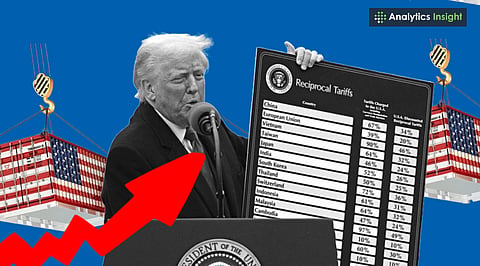

The Trump administration has outlined its plan to implement a 50% tariff on Indian imports, with the new duties set to take effect from August 27, 2025. A draft notice released by the Department of Homeland Security on Monday confirmed the timeline, signaling the White House’s intent to move forward with the measures amid stalled peace efforts in the Russia-Ukraine war.
The Trump Tariffs have reignited discussions on global trade and economic impact. According to the notice, the additional levies will apply to Indian products “entered for consumption, or withdrawn from warehouse for consumption, on or after 12:01 a.m. EDT on August 27.” The tariffs will cover a broad range of imports, except those specifically exempted under Executive Order 14329.
A proposed 50 Percent Tariff could reshape import and export strategies worldwide. The administration has set out three conditions under which Indian goods can avoid the new 50% tariff:
In Transit Exception: Products that were already shipped and in transit to the US before the August 27 deadline.
Timely Entry: These goods must clear customs or be withdrawn from warehouses for consumption before September 17, 2025.
Certification Requirement: Importers must certify eligibility to US Customs by declaring the code HTSUS 9903.01.85.
Analysts are closely watching US-India Trade Relations amid shifting policies. This comes after President Trump imposed tariffs on Indian products, first adding a 25% tariff for what the administration determined were "unfair trade barriers" instituted by New Delhi.
The Russia-Ukraine Conflict continues to influence global supply chains and energy markets. Then, another 25% tariff was added because India remained a customer of Russian energy, bringing the total to 50%.
Recent changes in US Trade Policy highlight a more protectionist approach. While the earlier measures prompted Russian President Vladimir Putin to meet with Trump in Alaska earlier this year, they fell short of securing a ceasefire in Ukraine.
The US has since stepped up pressure, hoping the stricter tariffs will reduce Moscow’s oil revenues by targeting India, one of Russia’s key trading partners.
Also Read: No Tariffs on Gold: A Boost or Threat to Bitcoin?
Efforts to arrange a direct meeting between President Putin and Ukrainian President Volodymyr Zelensky have so far faltered. Trump acknowledged on Monday that no date had been set, attributing the delay to ongoing animosity between the two leaders.
“It takes two to tango,” he remarked, adding that while he favors talks, the decision rests with both sides.
New Delhi has criticized Washington’s tariff escalation, calling the measures unfair and a violation of global trade norms. Indian officials argue that their energy imports from Russia are a matter of national interest and insist that punitive duties will disproportionately harm bilateral economic ties.
As the August 27 deadline looms, the tariff issue risks straining US-India relations further, even as Washington seeks leverage against Moscow through secondary economic pressure.
